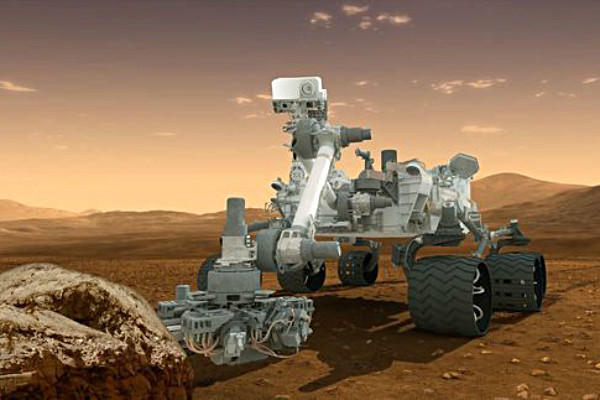NASA’s Curiosity mission has been going on longer than the eight months it took for the lander to go Mars and land on August 5, including the years it took the design the rover, build it, plan the flight path, and test it to make sure it could complete the flight to Mars safely…. and social media was incorporated into almost all of it.
“We’d really been building this audience for years,” says Veronica McGregor, social media manager at NASA’s Jet Propulsion Laboratory.
Curiosity’s touchdown on Mars was a trending topic on Twitter for nearly a day. NASA’s social outreach meant that millions of people watched live feeds on the Web despite a lack of live coverage from the major TV networks
The @MarsCuriosity Twitter account started in late 2008 when NASA was testing the rover’s various components, coming soon after the first mission account, which McGregor also launched for the Mars Phoenix mission. JPL’s social media team started a Facebook page about two years later.
The JPL team got permission to broadcast a live stream from the clean room where the rover was being built. For the next nine months, NASA broadcast the assembly for four hours each day.
“People could drop in and watch the rover in whatever stage it was being built,” McGregor says.
That live stream, broadcast via UStream, also featured a chat box in which people could chat with the social media team. This included special guests from the mission team from time to time and lasted about two hours every day.

“We would answer a lot of the questions, every day,” McGregor says.
The stream got 4.3 million unique visits over nine months. Videos like “Cruising with Curiosity” and “7 Minutes of Terror” filled the void after the stream ended.
“That’s using real mission data,” McGregor says.
Another group worked on an Xbox Live game that launched a few weeks before the landing. “There was a lot of groundwork already laid on this,” McGregor says. “Certainly at this NASA center we’ve been leading a lot of things. We are pretty well oiled.”
The years worth of work built an audience of about 150,000 Twitter followers the Saturday before the landing, which they hoped might grow by another 100,000 when it landed. “We thought that was maybe a high bar,” says Social Media Specialist Stephanie Smith. “We knew it was going to be big. We didn’t know how big.”
NASA tripled that number to 300,000 or so as the landing took place, and by Thursday was up to 900,000. The live streaming video had millions of viewers, some of whom gathered for overnight showings at museums.
The lab’s two UStream feeds had a total of about 1.1 million viewers, while the NASA stream itself had several million. Twitter interactions with the Curiosity Twitter account were going so fast team members couldn’t even read them and about 100,000 people were trying to chat in the UStream chat room.
Courtney O’Connor, a social media specialist, says that proves people with a strong interest don’t necessarily need to rely on their local news channels to dictate what to watch. “Social media is allowing [fans] to find each other and connect,” Smith says. “We see these relationships blossom.”
Curiosity’s Twitter account has a personality and has a light tone to her (yes, it’s a her). “If some kind of pop culture reference or song lyric or movie quote comes to mind that makes us laugh, and we can use that hook to get people’s attention, there’s a good chance they’ll click on the link and be exposed to some science and engineering coming straight out of the mission,” says Smith.
Expect to see more over the next two years, where she’ll send back new information including high-resolution video. “It’s a mission of discovery, so we can’t put those discoveries on a timetable, but everything we’ve seen so far has been amazing. We’ve only just begun,” says Smith. “She’s a multitasker. We love her.”
Source: Ragan.com

